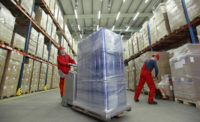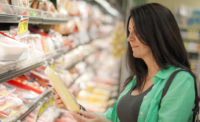Report: Organic chicken market to experience higher sales in online selling channels
Demand for organic chicken is likely to spearhead across various countries on the back of increasing demand for organic food products as opposed to traditional products.

The organic chicken market is likely to witness a notable shift from traditional selling to chain stores and online selling channels, according to a report published by Fact.MR, Rockville, Md. In fact, the report reveals that the sales of organic chicken via chain stores are likely to grow at a CAGR of 14.7% in terms of value during the period of forecast of 2018-2028. However, sales of organic chicken through direct sales are estimated to surpass other channels, says the report.
Demand for organic chicken is likely to spearhead across various countries on the back of increasing demand for organic food products as opposed to traditional products. Fact.MR envisages that the sales of organic chicken worldwide is likely to cross $7,500 million by end of 2028 with increasing demand from emerging countries.
Sales of organic chicken are expected to remain concentrated in the developed countries of Europe, closely followed by emerging economies of Asia Pacific, excluding Japan (APEJ), with physical fitness being a common and a key aspect observed in these regions. Strong fitness industry of Europe is likely to present potential opportunities with rising people participation in fitness clubs.
Likewise, APEJ, largely driven by the Fitness 2.0 trend, witnessed growing inclination toward pure protein source, consequently fueling demand for organic chicken, which is projected to expand at a rate of 10.3%, particularly in China, Australia and New Zealand, says the report.
Demand for organic chicken from household and residential buyers is expected to swell at a significant rate. Growing household size worldwide has played a vital role in pushing sales of organic chicken. Furthermore, growth of the organic chicken market is also influenced with a significant demand from the HoReCa (foodservice) sector, albeit at a relatively lower base.
High prices associated with organic chicken production are likely to remain as a confining factor, restricting the growth in sales of the produce. Organic chicken production is carried out under strict guidelines provided by USDA (U.S. Department of Agriculture) and other regulatory bodies. Regulations such as 100% organic feed for poultry, prohibition on use of antibiotics and other growth enhancers such as steroids have resulted in high prices of organic chicken.
The organic chicken market has also experienced a shift from free-ranging to confined poultry operations, as poultry operations facilitate a robust bio-security level on the back of zero contact between chickens and other animals. The movement toward confined poultry activities is expected to provide potential avenues for producers of organic chicken in the coming years.
Looking for a reprint of this article?
From high-res PDFs to custom plaques, order your copy today!






